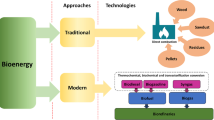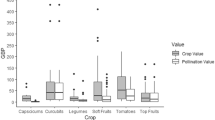Abstract
Fear of an upcoming woodfuel crisis caused by increasing woodfuel consumption in Bamako has had great influence on forestry policies aiming to reduce the impacts of urban woodfuel consumption. During the last 20 years, energy gap analyses—the relationship between supply and demand of woodfuels—have been produced by the government of Mali to prove the impacts of woodfuel consumption in Bamako on surrounding woodlands. This study evaluates the methodology and data used to describe this woodfuel crisis through a comparison with regional and historical data. The results of the energy gap analyses are challenged by using different estimates of woody resource availability and woodfuel consumption to create best and worst case scenarios. These show either high surpluses or high deficits with a difference of 2.7 million tons/yr. The woodfuel system of Bamako is highly dynamic and it is very difficult to evaluate its sustainability using a simple methodology such as the energy gap analysis. Trends over the last 20 years show a highly efficient woodfuel system that has adapted to changing circumstances, ensuring a continued affordable woodfuel supply for the urban residents. Better data on the productivity of West African woodlands and urban consumption are needed to avoid misinterpretations of the impacts of woodfuel harvesting on woody resources.







Similar content being viewed by others
Notes
Calculated based on the formula: \( {\text{D\% = W\% /(1}} - {\text{W\% /100)}} \). Source: FAO (1993).
Calculated based on the weight given for one stere and for one solid m3.
References
Arnold, M., Köhlin, G., Persson, R., and Shepherd, G. (2003). Fuelwood Revisited: What Has Changed in the Last Decade? CIFOR, Occasional paper, No.39.
Arnold, J. E. M., Kohlin, G., and Persson, R. (2006). Woodfuels, Livelihoods, and Policy Interventions: Changing Perspectives. World Development 34: 596–611.
BEAGGES (2007). Schema directeur d’approvisionnement (SDA) en bois énergie de Bamako: Rapport Final. Ministère des mines, de l’énergie et de l’eau/AMADER, Mali.
Benjaminsen, T. A. (1993). Fuelwood and Desertification: Sahel Orthodoxies Discussed on the Basis of Field Data from the Gourma region in Mali. Geoforum 24(4): 397–409.
Benjaminsen, T. A. (1997). Is there a Fuelwood Crisis in Rural Mali? GeoJournal 43: 163–174.
Breman, H., and Kessler, J. J. (1995). Woody Plants in Agro-Ecosystems of Semi-Arid Regions: With an Emphasis on the Sahelian Countries. Springer-Verlag Berlin Heidelberg, Berlin.
CCL (1998). Schema directeur d’approvisionnement en bois énergie de Bamako. Cellule Combustibles Ligneux, Stratégie Energie Domestique (Volet offre), Ministère de developpement rural et de l’eau/Ministère des mines et de l’énergie, Mali.
Clément, J. (1982). Estimation des volumes et de la productivité des formations mixtes forestières et graminéennes tropicales. Données concernant les pays de l’Afrique francophone au nord de l’équator et recommendations pour la conduite de nouvelles études. Revue bois et forêts des tropiques 198: 35–59.
Cline-Cole, R., Falola, J. A., Main, H. A. C., Mortimore, M. J., Nichol, J. E., & O’Reilly, F. D. (1987). Wood Fuel in Kano. Final Report of the Rural Energy Research Project, Bayero University, Kano. Submitted to the United Nations University.
Dewees, P. A. (1989). The Woodfuel Crisis Reconsidered: Observations on the Dynamics of Abundance and Scarcity. World Development 17: 1159–1172.
Diarra, D. C., and Dembele, P. (2006). Renewable Energy Resources in Mali: Potential and Options for a Sustainable Development. Proc.of the 31st SBRN and SESCI.
Elkan, W. (1988). Alternatives to Fuelwood in African Towns. World Development 16: 527–533.
ESMAP (1992). Household energy stratgey: Republic of Mali. UNDP/World Bank, Report No 147–92.
FAO (1983). Woodfuel surveys. Forestry for local community development programme, http://www.fao.org/docrep/Q1085E/q1085e00.htm#Contents (23.02.10)
Foley, G. (2001). Sustainable woodfuel supplies from the dry tropical woodlands. Energy sector management assistence programme (ESMAP), ESMAP Technical paper, No 013, The World Bank/UNDP
Gautier, D., Hautdidier, B., and Gazull, L. (2010). Woodcutting and Territorial Claims in Mali. Geoforum 42: 28–39.
Gazull, L., Gautier, D., and Raton, G. (2006). Analyse de l’évolution des filières d’approviosionnement en bois-énergie de la ville de Bamako: Mise en perspective des dynamiques observées avec les politiques publiques mises en oeuvre depuis 15 ans. Report d’expertise du Cirad, USAID/CIFOR.
Hiemstra-van der Horst, G., and Hovorka, A. J. (2009). Fuelwood: The “Other” Renewable Energy Source for Africa? Biomass and Bioenergy 33: 1605–1616.
Konaté, G. (2001). L’etude prospective du secteur forestier en Afrique (FOSA)—Republique du Mali. Ministère de l’equipement de l’amenagement du territoire, de l’environnement et de l’urbanisme. Direction nationale de la conservation de la nature.Republique du Mali.
Mercer, D. E., and Soussan, J. (1992). Fuelwood problems and solutions. In Sharma, M. P. (ed.), Looking for Balance Between Conservation and Development. World Bank, Washington DC, pp. 177–213.
MET (2007). Programme d’action national d’adaptation aux changements climatique. Ministère de l’equipement et des transports, Republique du Mali
Morton, J. (2007). Fuelwood Consumption and Woody Biomass Accumulation in Mali, West Africa. Ethnobotany Research & Applications 5: 37–44.
Noppen, D., Kerkhop, P., and Hesse, C. (2004). Rural fuelwood markets in Niger. An assessment of Danish support to the Niger Household Energy Strategy 1989–2003. IIED/Danida.
Nouvellet, Y., Sylla, M. L., and Kassambara, A. (2003). La production de bois d’énergie dans les jachères au Mali. Bois et forêts des tropiques 276(2): 5–15.
Nygård, R., Sawadogo, L., and Elfving, B. (2004). Wood-Fuel Yields in Short-Rotation Coppice Growth in the North Sudan savanna in Burkina Faso. Forest Ecology and Management 189: 77–85.
Ohler, F. M. J. (1985). The Fuelwood Production of Wooded Savanna Fallows in the Sudan Zone of Mali. Agroforestry Systems 3: 15–23.
Picard, N., Ouattara, S., Diarisso, D., Ballo, M., and Gautier, D. (2006). Defining Units for Savanna Management in Sudano-Sahelian Areas. Forest Ecology and Management 236: 403–411.
Ribot, J. (1999). A History of Fear: Imagining Deforestation in the West African Dryland Forests. Global Ecology and Biogeography Letters 8: 291–300.
Soussan, J., O’Keefe, P., and Munslow, B. (1990). Urban Fuelwood: Challenges and Dilemmas. Energy Policy 18: 572–582.
Utria, B., Wilton, M., Ouerghi, A., and & Roddis, S. (1996). Review of policies in the traditional energy sector—RPTES: Regional report for Burkina Faso, Mali, Niger, Senegal, the Gambia. RPTES, Discussion paper series, No 16013, World Bank.
van der Plas, R. J., and Abdel-Hamid, M. A. (2005). Can the Woodfuel Supply in Sub-Saharan Africa be Sustainable? The Case of N’Djaména, Chad. Energy Policy 33: 297–306.
Wardell, D. A., Reenberg, A., and Tøttrup, C. (2003). Historical Footprints in Contemporary Land Use Systems: Forest Cover Changes in Savannah Woodlands in the Sudano-Sahelian Zone. Global Environmental Change-Human and Policy Dimensions 13: 235–254.
Acknowledgements
The authors would like to thank AMADER for providing much helpful information and participating in interviews. Special thanks to Ivan Nygaard, Technical University of Denmark, for help with defining and developing the project idea.
Author information
Authors and Affiliations
Corresponding author
Rights and permissions
About this article
Cite this article
Hansfort, S.L., Mertz, O. Challenging the Woodfuel Crisis in West African Woodlands. Hum Ecol 39, 583–595 (2011). https://doi.org/10.1007/s10745-011-9417-8
Published:
Issue Date:
DOI: https://doi.org/10.1007/s10745-011-9417-8




